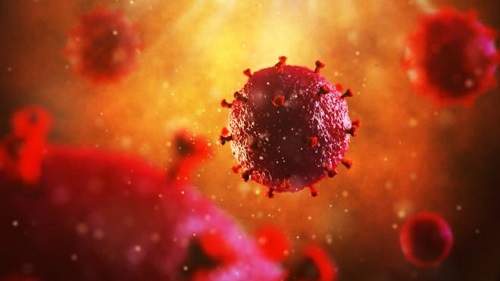A UK patient's HIV has become "undetectable" following a stem cell transplant - in only the second case of its kind, doctors report in Nature.
The London patient, who was being treated for cancer, has now been in remission for 18 months and is no longer taking HIV drugs.
The researchers say it's too early to say the patient is 'cured' of HIV.
Experts caution the approach is not practical for healthy people with HIV, but may ultimately help find a cure.
The male London patient, who has not been named, was diagnosed with HIV in 2003 and advanced Hodgkin's lymphoma in 2012.
He had chemotherapy to treat the Hodgkin's cancer and, in addition, stem cells were implanted into the patient from a donor resistant to HIV, leading to both his cancer and HIV going into remission.
Researchers from University College London, Imperial College London, Cambridge and Oxford Universities were all involved in the case.
'Not an anomaly'
This is the second time a patient treated this way has ended up in remission from HIV.
Ten years ago, another patient in Berlin received a bone marrow transplant from a donor with natural immunity to the virus.
Timothy Brown, said to be the first person to 'beat' HIV/AIDS, was given two transplants and total body irradiation (radiotherapy) for leukaemia - a much more aggressive treatment.
"By achieving remission in a second patient using a similar approach, we have shown that the Berlin Patient was not an anomaly, and that it really was the treatment approaches that eliminated HIV in these two people," said lead study author Prof Ravindra Gupta from UCL.
Prof Eduardo Olavarria, also involved in the research, from Imperial College London, said the success of stem cell transplantation offered "hope in the search for a long-awaited cure for HIV/AIDS".
How does it work?
CCR5 is the most commonly used receptor by HIV-1, the virus strain of HIV that dominates around the world - to enter cells.
But a very small number of people who are resistant to HIV have two mutated copies of the CCR5 receptor.
This means the virus cannot get into cells in the body that it normally infects.
The London patient received stem cells from a donor with this specific genetic mutation, which also made him resistant to HIV.
But a reservoir of cells carrying HIV can still remain in the body, in a resting state, for many years.
The UK researchers say it may be possible to use gene therapy to target the CCR5 receptor in people with HIV, now they know the Berlin patient's recovery was not a one-off.

Prof Graham Cooke, NIHR research professor and reader in infectious diseases from Imperial College London, said the results were "encouraging".
"If we can understand better why the procedure works in some patients and not others, we will be closer to our ultimate goal of curing HIV.
"At the moment the procedure still carries too much risk to be used in patients who are otherwise well."
'Potentially significant'
Dr Andrew Freedman, reader in infectious diseases and honorary consultant physician at Cardiff University, said it was an "interesting and potentially significant report".
But he said much longer follow-up would be needed to ensure the virus does not re-emerge at a later stage.
"While this type of treatment is clearly not practical to treat the millions of people around the world living with HIV, reports such as these may help in the ultimate development of a cure for HIV."
In the meantime, he said the focus needed to be on diagnosing HIV promptly and starting patients on life-long combination antiretroviral therapy, known as cART.
This can prevent the virus being transmitted to others and give people with HIV a near-normal life expectancy.
Read also: A/R: 2,186 pregnant mothers tested HIV positive in 2018
Source: bbc





